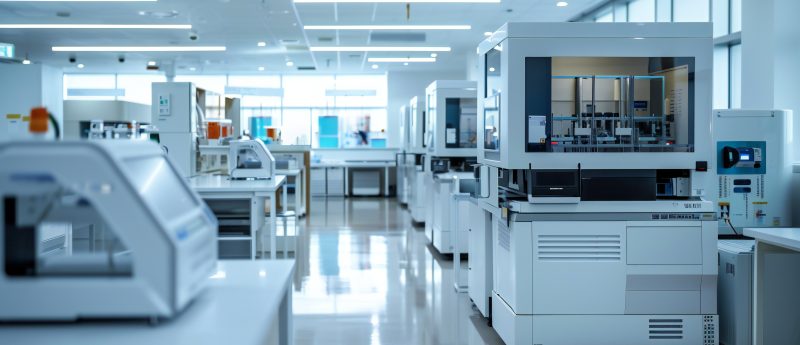3. What are the main advantages of HRMS vs triple quadrupole MS?

Bertrand Rochat: “The HRMS instruments that I have worked with showed similar quantitative performance than QQQ-MS [1][2]. Importantly, in the comparisons from examples [1] and [2], HRMS data was acquired in HR-full scan mode and not in “narrow-minded” SRMs that were performed with QQQ-MS. Indeed, HRMS can be as sensitive and selective in HR-full scan than QQQ-MS in SRMs acquisition. Many other bioanalysts have demonstrated that the difference in quantitative performance between QQQ-MS and HRMS, is insignificant. This key point brings a shift of paradigm in LC–MS analysis because HRMS gives the most complete picture of what is in a biological sample. Taking into account that HRMS is renowned to be a key instrument for qualitative and discovery analyses, HRMS brings an additional value compared to QQQ-MS which is essentially restricted to quantitative determinations. HRMS is more versatile. From the global picture, dedicated software can reveal unexpected compounds in a sample. This can be used in various fields: toxicology, biomedicine, environment, water/food safety, etc.
I believe that HRMS is going to replace QQQ-MS for the vast majority of LC–MS analyses. Versatility, excellent quantitative and qualitative determinations and global acquisition are the key criteria. The use of HRMS for all LC–MS determinations simplifies workflows and allows a better translation between research and routine.”
Diego Cortes: “In the case of HRMS, the ability to perform both qualitative and quantitative analysis is very appealing. From a drug discovery perspective, it is possible to rapidly obtain information not just on the analyte, but also on metabolites and potential biomarkers of interest. As a single platform, LC–HRMS is well suited for high throughput screening. By collecting full spectrum data, post-acquisition data mining can be applied for both qualitative and quantitative analysis, which is not possible for QQQ systems operated in SRM mode, something that is of great interest, especially for research labs. This approach with HRMS carries less weight in regulated bioanalysis where the primary focus is on the sensitive, accurate measurement of the drug in samples collected specifically for PK analysis in toxicology and clinical studies.
The greater mass range of HRMS platforms in comparison to QQQ instruments unlocks the potential for intact analysis of large molecules, both for characterization and for direct quantification.
HRMS offers significantly greater specificity, along with the ability to determine molecule characterization information using high-resolution accurate mass data. If an assay shows interferences using a triple quadrupole instrument, whether it is a biomarker or therapeutic, the HRMS instruments usually can reduce or eliminate that background and improve specificity.”
Graeme Clark: “As mentioned, HRMS allows the scientist to collect a much richer data set. This facilitates, for example, initial analysis for parent compound in PK samples, but then a subsequent ‘deeper dive’ for circulating metabolites and/or biomarkers. The trade-off for this is that data management can be an issue, with HRMS file sizes considerably larger than triple quadrupole. Additionally, HRMS systems are far less forgiving with any drift in mass calibration and as such can be considered ‘less robust’ than triple quadrupoles in a production environment.”
Ian Edwards: “It really depends on the analytical question. A triple quadrupole mass spectrometer for routine quantitative bioanalysis of small and large molecules using a validated assay is hard to beat. In addition, technicians and analytical scientists are comfortable operating this technology. A few advantages of HRMS for large molecule bioanalysis include high mass resolution detection of peptide fragments, for challenging samples, and when interference from endogenous species is a problem. Secondly, quantification of large proteins (> 15 kDa) at the intact level, using the extended mass range, is something that cannot be done with current triple quadrupole mass spectrometers. Adding to this, there are simply some questions only HRMS can answer, and these are typical of a qualitative nature, for example; large molecule metabolite identification and biopharmaceutical characterization.”
Scott Summerfield:“Many mass spectrometry applications, past and present, rely on high resolution to achieve sufficient selectivity. Bioanalysis just demands more things like fast run times and low limits of quantification. The main reason tandem MS has dominated quantitative bioanalysis is based on the availability of an instrument platform that can guarantee adequate selectivity and sensitivity.
It’s important to remember that one innovation in bioanalysis follows another. The genesis of electrospray ionization (ESI) allowed a much wider range of molecules to be analyzed by means of mass spectrometry, including small molecule drug candidates (and metabolites). But the ESI process is ‘soft’ and imparts little internal energy into the resulting ions. Back in the day, most MS and tandem MS work was performed on sector mass specs that could work at high resolution but these systems did not cope very well with the high gas loads in the ion source/ionization interface, the scan speeds were slow and the level of expertise needed to tune and maintain high resolution was high. So, tandem quadrupoles became the preferred partner to ESI because they were more tolerant to higher gas pressures and the scan speeds were fast when coupled to collisionally-activated dissociation Using MS/MS enhanced the selectivity lost to switching to the lower resolution quadrupole platform.
That said, the duty cycle of tandem quadrupoles may always offer an advantage for the highest sensitivity applications.”
Timothy Garrett: “HRMS maintains the ability to perform MS/MS, but adds both high resolving power and high mass accuracy thus providing two additional methods for differentiation of the target species from noise or background. The downside of HRMS is the limited dynamic range that is provided by a triple quadrupole.”
[2] Henry H, Sobhi HR, Scheibner O, Bromirski M, Nimkar SB, Rochat B. Comparison between a high-resolution single-stage Orbitrap and a triple quadrupole mass spectrometer for quantitative analyses of drugs. Rapid Commun. Mass Spectrom. 26, 499–509 (2012).
[3] Grund B, Marvin L, Rochat B. Quantitative performance of a quadrupole-orbitrap-MS in targeted LC–MS determinations of small molecules. J Pharm Biomed Anal. 124, 48–56 (2016).





